
FM 21-150 COMBATIVES 1992
.pdf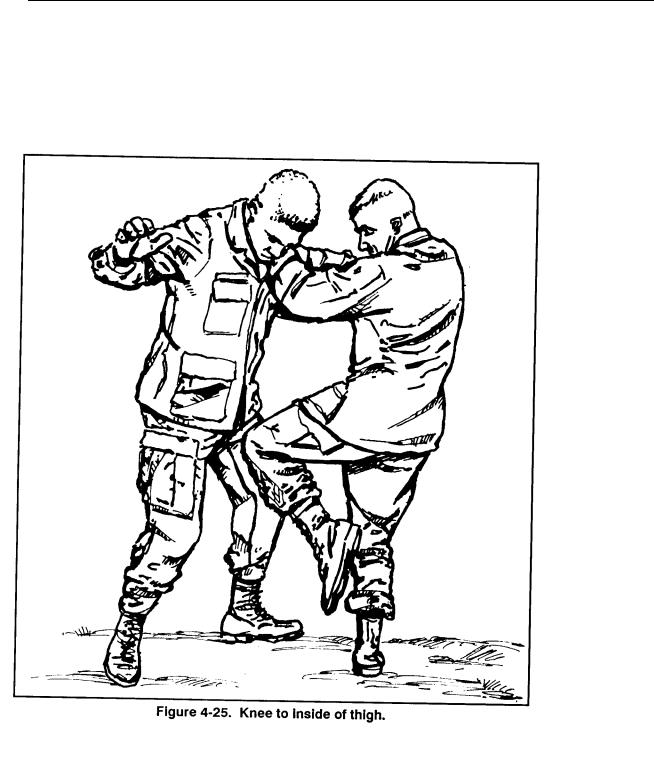
FM 21-150
(3) knee strike to inside of thigh. An effective technique for close-in grappling is when the defender delivers a knee strike to the inside of his opponent’s thigh (peroneal nerve) (Figure 4-25). The defender then executes a follow-up technique to a vital point.
4-25
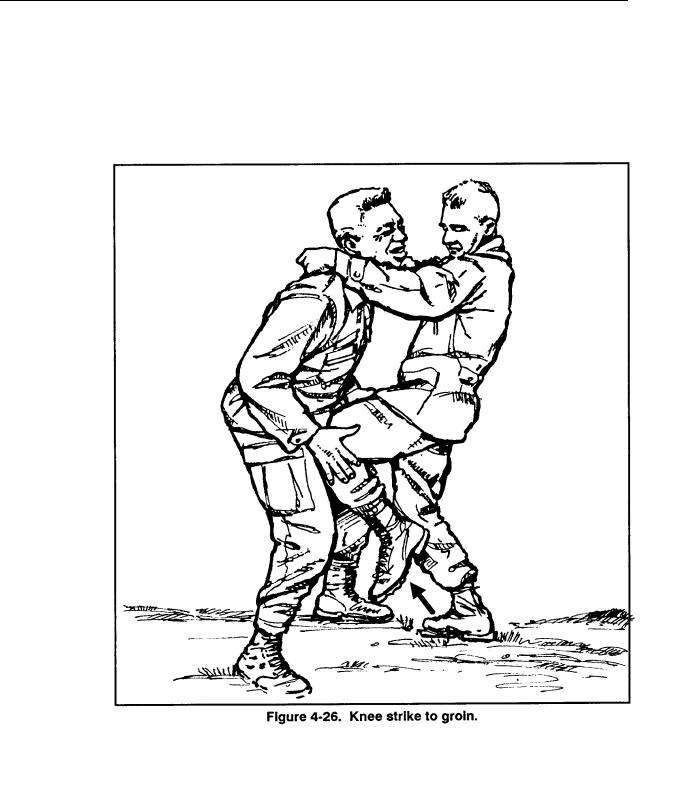
FM 21-150
(4) Knee strike to groin. The knee strike to the groin is effective during close-in grappling. The defender gains control by grabbing his opponent’s head, hair, ears, or shoulders and strikes him in the groin with his knee (Figure 4-26).
4-26
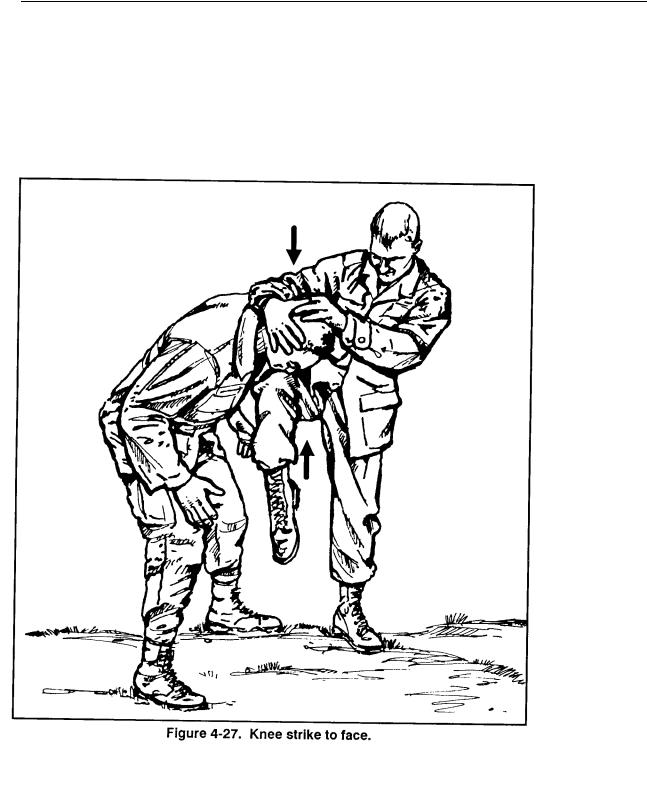
FM 21-150
(5) Knee strike to face. The defender controls his opponent by grabbing behind his head with both hands and forcefully pushing his head down. At the same time, the defender brings his knee up and smashes the opponent in the face (Figure 4-27). When properly executed, the knee strike to the face is a devastating technique that can cause serious injury to the opponent.
4-27
CHAPTER 5
LONG-RANGE COMBATIVES
In long-range combatives, the distance between opponents is such that the combatants can engage one another with fully extended punches and kicks or with handheld weapons, such as rifles with fixed bayonets and clubs. As in medium-range combatives, a fighter must continuously monitor his available body weapons and opportunities for attack, as well as possible defense measures. He must know when to increase the distance from an opponent and when to close the gap. The spheres of influence that surround each fighter come into contact in long-range combatives. (See Chapter 6 for interval gaps and spheres of influence.)
Section 1
NATURAL WEAPONS
The most dangerous natural weapons a soldier posseses are his hands and feet. This section describes natural weapon techniques of various punches, strikes, and kicks and stresses aggressive tactics with which to subdue an opponent.
5-1. EXTENDED ARM PUNCHES AND STRIKES
Extended arm punches and strikes in long-range combatives, like those in medium-range combatives, should be directed at vital points and nerve motor points. It is essential to put the entire body mass in motion behind long-range strikes. Closing the distance to the target gives the fighter an opportunity to take advantage of this principle.
a.In extended punches, the body weapon is usually the fist, although the fingers may be used—for example, eye gouging. When punching, hold the fist vertically or horizontally. Keep the wrist straight to prevent injury and use the first two knuckles in striking.
b.Another useful variation of the fist is to place the thumb on top of the vertical fist so that the tip protrudes beyond the curled index finger that supports it. The thumb strike is especially effective against soft targets.
5-1

FM 21-150
Do not fully lock out the arm when punching; keep a slight bend in the elbow to prevent hyperextension if the intended target is missed.
5-2. KICKS
Kicks during hand-to-hand combat are best directed to low targets and should be simple but effective. Combat soldiers are usually burdened with combat boots and LCE. His flexibility level is usually low during combat, and if engaged in hand-to-hand combat, he will be under high stress. He must rely on gross motor skills and kicks that do not require complicated movement or much training and practice to execute.
a. Side Knee Kick. When an opponent launches an attack—for example, with a knife (Figure 5-1, Step 1), it is most important for the defender to first move his entire body off the line of attack as the attacker moves in.
As the defender steps off at 45 degrees to the outside and toward the opponent, he strikes with a short punch to the floating ribs (Figure 5-1, Step 2).
Then the defender turns his body by rotating on the leading, outside foot and raises the knee of his kicking leg to his chest. He then drives his kick into the side of the attacker’s knee with his foot turned 45 degrees outward (Figure 5-1, Step 3). This angle makes the most of the striking surface and reduces his chances of missing the target.
5-2
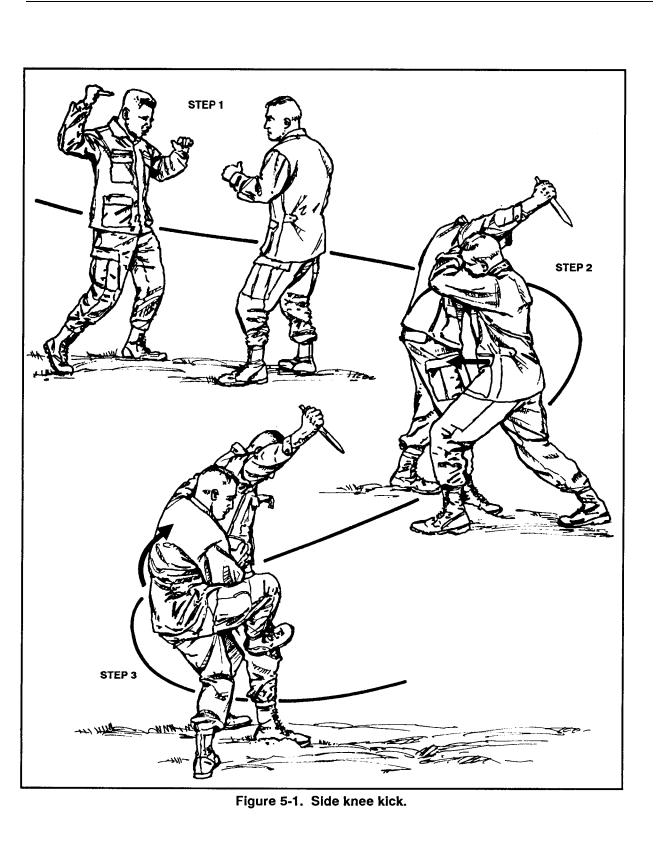
FM 21-150
5-3
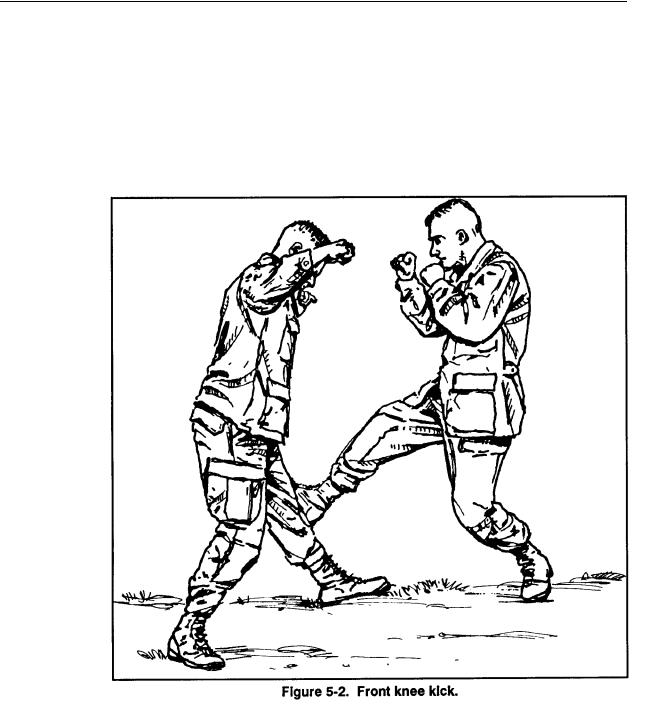
FM 21-150
b. Front Knee Kick. As the attacker moves in, the defender immediately shifts off the line of attack and drives his kicking foot straight into the knee of the attacker (Figure 5-2). He turns his foot 45 degrees to make the most of the striking surface and to reduce the chances of missing the target. If the kick is done right, the attacker’s advance will stop abruptly, and the knee joint will break.
5-4
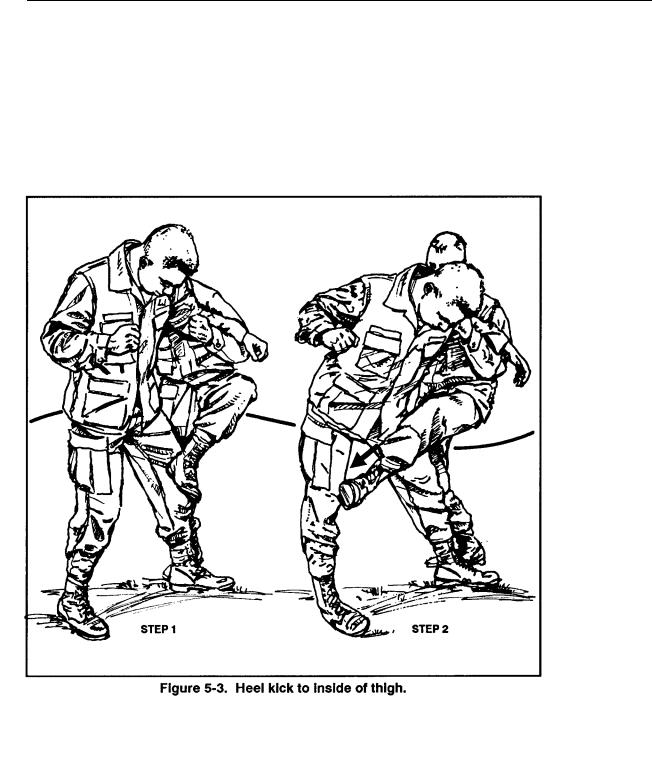
FM 21-150
c. Heel Kick to Inside of Thigh. The defender steps 45 degrees outside and toward the attacker to get off the line of attack. He is now in a position where he can drive his heel into the inside of the opponent’s thigh (femoral nerve) (Figure 5-3, Steps 1 and 2). Either thigh can be targeted because the kick can still be executed if the defender moves to the inside of the opponent rather than to the outside when getting off the line of attack.
5-5
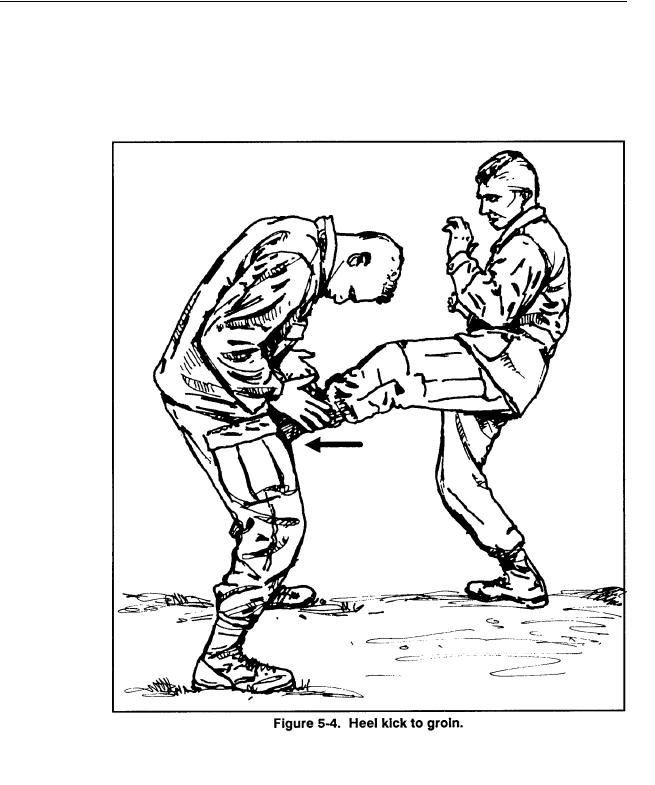
FM 21-150
d. Heel Kick to Groin.The defender drives a heel kick into the attacker’s groin (Figure 5-4) with his full body mass behind it. Since the groin is a soft target, the toe can also be used when striking it.
5-6
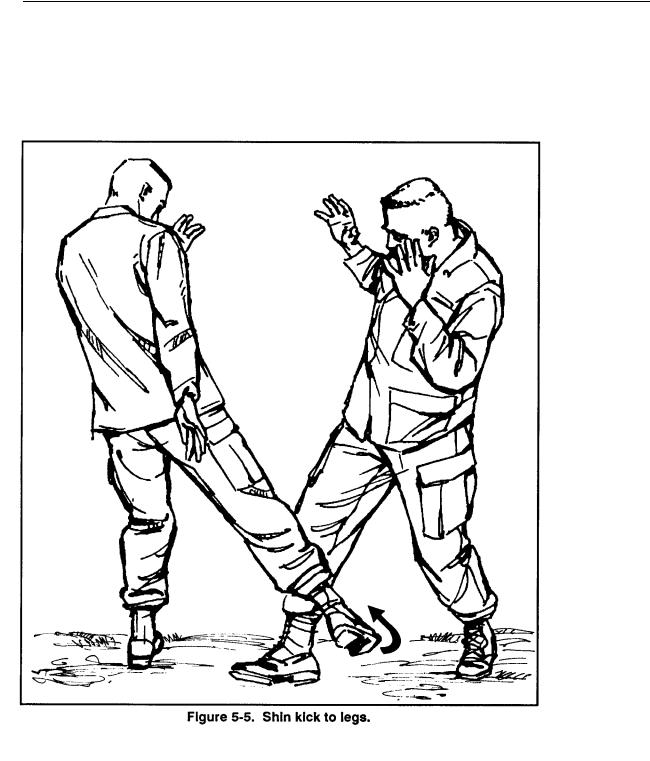
FM 21-150
e. Shin Kick. The shin kick is a powerful kick, and it is easily performed with little training. When the legs are targeted, the kick is hard to defend against (Figure 5-5), and an opponent can be dropped by it.
5-7
